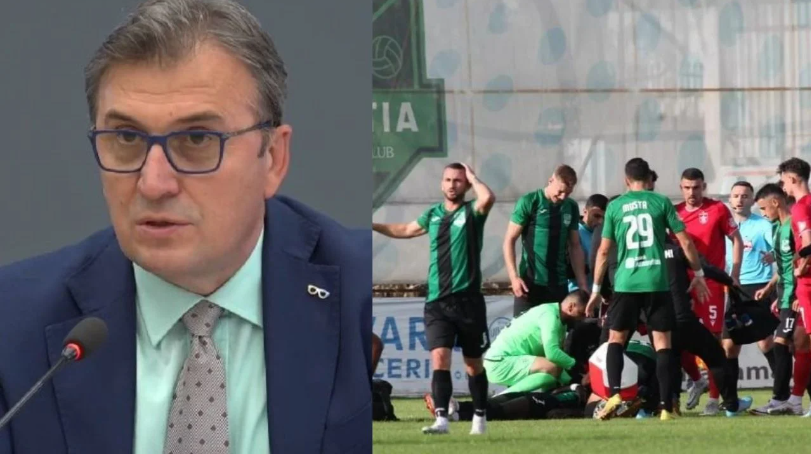Renowned Albanian doctor, Skender Brataj says Raphael Dwamena should not have been allwoed to play due to his heart condition.
Dwamena died after suffering a cardiac attack in a league game on Saturday, November 11.
The 28-year-old lost consciousness in the 23rd minute during the league match between his side Egnatia and Partizan and was immediately taken to the hospital.
Dwamena, however, did not survive upon arrival at the hospital leading to the unfortunate incident.
His death was subsequently confirmed by the Albanian Football Association through a statement minutes after the incident.
However, according to Dr Brataj the late footballer was suffering from a rare form of heart disease known as Hypertrophic Cardiomyopathy, which can be inherited.
In a lengthy post on social media, Dr Braaj expressed deep condolences to the footballer's family as he explained the player's illness.
SKENDER BRATAJ'S REACTION
Death forewarned!
Condolences to the family for the loss of their loved one.
When the event happened in 2021 with the Danish football player Eriksen, there were many interpretations. One thing is certain: Eriksen should not play football! Raphael Dwamena was not supposed to play football! The doctors informed him several times, God forgave him twice!
What is Hypertrophic Cardiomyopathy?
It (enlargement of the heart walls) is an inherited heart disease.
This form of cardiomyopathy is called asymmetric; Rarer forms of cardiomyopathy, affecting approximately 2% of patients, are concentric hypertrophy, with uniform thickening of the heart in the left ventricular wall and hypertrophy with enlargement of its apex.
COMPLICATIONS
In most cases, when the disease is monitored, it has progressed well. Hypertrophic cardiomyopathy can present with fatigue accompanied by loss of consciousness, syncope, respiratory arrest up to cardiac arrest. In this case, immediate resuscitation is required.
Diagnostic
The diagnosis of hypertrophic cardiomyopathy is established if thickening of the left ventricular wall is found, which are associated with abnormalities of the shape and/or function of the mitral valve, coronary blood circulation, and the electrical impulse conduction system of the heart.
These examinations lead to the diagnosis of the disease:
Electrocardiogram (ECG), Echocardiogram, cardiac MRI, CT scan of the heart, laboratory tests and genetic analysis.
Treatment
Patients diagnosed with hypertrophic cardiomyopathy are treated with the following groups of medications:
Beta-blockers, calcium channel blockers, diuretics, and disopyramide.
If therapy is not sufficient and the patient continues to have symptoms, there are 2 surgical options for treating hypertrophic cardiomyopathy.
The first option consists in removing the part of the heart muscle tissue that has thickened: this operation is called a myectomy (Morrow procedure).
The second consists in the intervention of the interventricular septum.
For patients considered to be at high risk of life-threatening cardiac arrhythmias, implantation of an automatic defibrillator (ICD) is indicated, as was the case of Raphael Dwamena.
Two are the lethal arrhythmias in this case: Pulseless Ventricular Tachycardia and Ventricular Fibrillation which have happened to this player two other times on the field.
Could it have been avoided? Yes.
He shouldn't be playing!
Dr. Skender Brataj.

